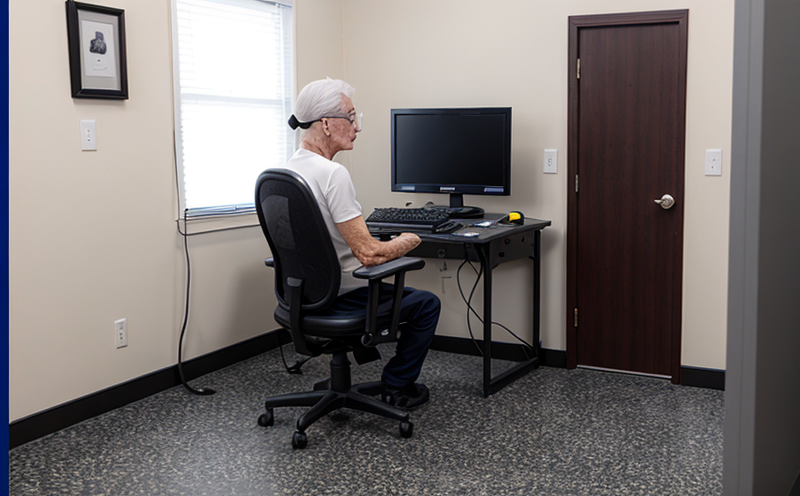ISO 105-B02 Lightfastness testing of dyed textiles Xenon arc
The ISO 105-B02 standard is a globally recognized protocol that evaluates the light stability and resistance to fading in dyed or printed textile materials. This test utilizes xenon arc lamps, which simulate the spectrum of sunlight, including ultraviolet (UV), visible light, and infrared radiation. The purpose of this testing is to assess how well the fabrics will retain their color after prolonged exposure to artificial sunlight.
The procedure involves placing a specimen between the xenon lamp and an integrating sphere. The xenon arc lamp emits intense light that closely mimics solar radiation, allowing for accelerated aging. The test typically runs over several days or weeks depending on the desired degree of fading. During this time, the sample is exposed to controlled conditions of temperature, humidity, and relative darkness.
The specimens are then compared visually against a control specimen that has not been exposed to light. This comparison helps determine the extent of color change due to exposure. The results provide valuable information for quality assurance in textile manufacturing, ensuring products meet durability standards and customer expectations regarding colorfastness over time.
Wear & aging simulation testing is essential in industries such as fashion, home textiles, automotive upholstery, and outdoor gear where prolonged exposure to sunlight can significantly impact the appearance of dyed materials. By using this standardized method, manufacturers can predict how their products will perform under real-world conditions without having to wait for natural aging.
The Xenon arc testing is particularly useful because it accelerates the aging process by exposing materials to high-intensity light sources continuously or intermittently. This allows manufacturers and suppliers to identify potential issues early in the development stage, reducing costly rework later on. Additionally, it helps ensure compliance with international standards like ISO 105-B02.
When conducting this test, careful attention must be paid to specimen preparation, including proper trimming of edges, ensuring uniform thickness across samples, and aligning them correctly within the testing chamber. Proper lighting conditions are also crucial for accurate visual comparisons post-testing.
The equipment used in ISO 105-B02 testing includes specialized chambers designed specifically for xenon arc lamps, integrating spheres to capture emitted light, spectrophotometers for measuring color changes, and environmental control systems for maintaining consistent temperature and humidity levels throughout the test duration. These instruments play critical roles in ensuring accurate results that reflect actual usage scenarios.
Understanding the nuances of ISO 105-B02 testing is vital not only for those directly involved in textile production but also for quality managers, compliance officers, R&D engineers, and procurement personnel responsible for selecting suppliers who adhere to stringent quality control measures. Compliance with such standards demonstrates a commitment to producing high-quality products that meet both aesthetic and functional requirements.
For instance, fashion brands rely heavily on reliable lightfastness testing when designing collections meant to withstand extended periods outdoors or under artificial lights. Similarly, automotive manufacturers use this technique to ensure seat covers remain vibrant even after years of exposure to direct sunlight inside vehicles parked in sunny regions.
- Proper specimen preparation: Ensures accurate comparisons and reliable results.
- Controlled environmental conditions: Maintains consistency across tests, enhancing reproducibility.
- Accurate visual assessment: Provides qualitative insights into color changes over time.
- Compliance with international standards: Validates product quality on a global scale.
In conclusion, ISO 105-B02 lightfastness testing of dyed textiles using xenon arc lamps is an indispensable tool in the textile industry. It enables manufacturers to assess color stability and durability effectively, thereby improving overall product performance and consumer satisfaction. By leveraging this standard, companies can stay ahead of market trends while maintaining high standards of quality.
Eurolab Advantages
At Eurolab, we bring unparalleled expertise to ISO 105-B02 lightfastness testing, offering a range of benefits that set us apart from other laboratories:
- Dedicated facilities: Our state-of-the-art testing chambers provide precise control over temperature, humidity, and exposure time, ensuring accurate results.
- Experienced technicians: Our team comprises highly skilled professionals with extensive experience in textile testing, guaranteeing thorough execution of each test.
- Accurate equipment: We utilize the latest technology including xenon arc lamps, integrating spheres, and spectrophotometers to deliver precise measurements and consistent outcomes.
- Comprehensive support: From initial consultation through final report generation, our clients receive full guidance throughout the testing process.
- Fast turnaround times: We pride ourselves on efficient workflows that allow for quicker feedback loops without compromising quality.
- Global recognition: Our adherence to international standards ensures compliance with global regulations and enhances market credibility.
- Client satisfaction: By delivering reliable, actionable data supported by detailed reports, we contribute significantly to client success.
Choosing Eurolab for your ISO 105-B02 lightfastness testing needs means gaining access to a comprehensive service package that caters to all aspects of your project. Our commitment to excellence and customer satisfaction is reflected in every step of the process, from setup to analysis.
Quality and Reliability Assurance
The quality and reliability assurance (QRA) measures implemented at Eurolab are designed to ensure that each ISO 105-B02 test adheres strictly to established protocols. These include:
- Calibration checks: Regular calibration of all instruments ensures consistent performance.
- Data validation: Multiple readings and cross-references confirm accuracy before final reports are issued.
- Standard operating procedures: Strict adherence to standardized guidelines minimizes variability in results.
- Quality control audits: Periodic reviews of test procedures and equipment maintain high standards.
- Continuous training: Ongoing education for staff ensures they stay up-to-date with the latest methodologies and technologies.
These rigorous measures are integral to our mission of providing reliable data that can be trusted by industry professionals worldwide. They reflect our dedication to maintaining the highest standards in textile testing services.





